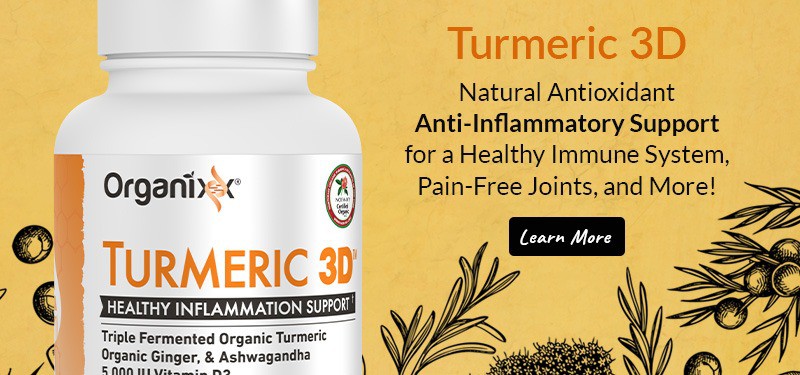Have you ever experienced a painful inflammatory process in your body, or a disease condition that involved inflammation? Chances are you would do just about anything to stop that from happening (again), right? After all, systemic inflammation is linked to serious chronic diseases including diabetes, osteoporosis, and cancer, as well as increased risk of premature death.
It might surprise you to learn that according to a study published in the Feb 2018 issue of the journal Emotions [1] simply cultivating a wide range of positive emotions can actually help to decrease inflammation levels in the body!
The research was conducted between 2007-2012 and involved 175 participants, aged 40 to 65. Each participant submitted diaries  of their emotions, including such details as the number of different emotions they felt, how often they felt the emotions, and how strongly they experienced them.
of their emotions, including such details as the number of different emotions they felt, how often they felt the emotions, and how strongly they experienced them.
Experiencing a Range of Emotions Is Important
Researchers refer to this range or diversity of emotions as “emodiversity.” The participants were asked to assess 16 positive emotions which included:
- Determination
- Enthusiasm
- Inspiration
- Interest
- Excitement
- Amusement
- Alertness
- Activity
- Strength
- Pride
- Attentiveness
- Happiness
- Relaxation
- Cheerfulness
- Ease
- Calmness
They also assessed 16 negative emotions, including:
- Fright
- Fear
- Upset
- Distress
- Jittery
- Nervousness
- Shame
- Guilt
- Irritability
- Hostility
- Tiredness
- Sluggishness
- Sleepiness
- Feeling blue
- Sad
- Drowsy
As part of the study participants had their blood drawn at two different intervals which were analyzed for three different inflammatory markers: IL-6, CRP, and fibrinogen.
What the researchers found is that even after accounting for age, gender, anti-inflammatory medications, BMI, medical conditions, personality, and mean levels of positive and negative emotions… the people with the lowest inflammation rates were the ones who noted a wider range of positive emotions.
Interestingly, and somewhat surprisingly, experiencing a wider RANGE of positive emotions seemed to matter more than simply feeling happy.
What About Negative Emotions?
Did those participants who experienced a wider range of negative emotions have higher levels of inflammation? You might think so, but that did not prove to be so.
The researchers found that there was no association between negative emodiversity (meaning a greater range of negative emotions) and increased inflammation.
Emotional Diversity Linked to Better Overall Health
Other studies have previously investigated this idea of emotional diversity and found that variety is indeed the spice of emotional life – and an indicator of good health.
One study in particular, termed the Emodiversity Project [2, 3], involved researchers from six leading universities in four countries. They undertook two studies involving more than 37,000 respondents in total.
They found emodiversity to be an independent predictor of mental and physical health.

The first study, comprising over 35,000 participants, found that people who experienced a high range of overall emotional diversity – not just positive emotions but negative ones as well as a mix of both – were less likely to suffer from depression than people who rated highly in positive emotions alone.
The second and smaller study involving 1,300 people found that people with higher overall emotional diversity also had better diets, exercised more, smoked less, had less need for medications, had lower health care costs, and spent less time in the hospital.
One of the project’s lead authors, Jordi Quoidbach, a psychology professor at Barcelona University, likens emotional diversity to environmental biodiversity. In an interview with Discover magazine [4], Prof Quoidbach stated:
“[Just as] biodiversity increases resilience to negative events because a single predator cannot wipe out an entire ecosystem, emodiversity may prevent specific emotions – in particular detrimental ones such as acute stress, anger, or sadness – from dominating the emotional ecosystem.”
In essence, these two studies seem to be rather convincing that expressing a wide range of human emotions makes us healthier overall than those who endeavor to be positive more often than not. However, other research studies have found that cultivating positive emotions does have very real and beneficial effects.
The Argument for Positive Emotional Diversity
Barbara L Fredrickson, Distinguished Professor of Psychology, and author of the book Positivity [5], has spent years investigating the role of positive emotions.
Her studies have led her to believe that positive emotions help to function as efficient antidotes, helping to correct or undo the lingering after-effects of negative emotions. She and her colleagues have termed this the “undoing hypothesis.”
Prof Fredrickson believes that negative emotions like fear and anger close down our minds and our hearts, whereas deeply felt positive emotions do quite the opposite. They open up our hearts and minds, improve our mindsets, and even our biochemistry.
The Broaden-and-Build Theory
Fredrickson is often quoted due to her studies in positivity. She also formulated a theory called the Broaden-and-Build Theory, which holds that positive emotions are evolved psychological adaptations that helped to increase our ancestors’ odds of survival and reproduction.
In effect, in contrast with negative emotions, which assisted our ancestors to adapt in life-threatening circumstances, the benefits of broadened thought–action repertoires emerged over time and carried indirect and long-term ability to adapt because they helped to build social connections, coping strategies, and environmental knowledge [6].
The Emotional Tipping Point: A 3:1 Ratio
 Prof Fredrickson’s studies have found that there is a tipping point between positive and negative emotions.
Prof Fredrickson’s studies have found that there is a tipping point between positive and negative emotions.
She explains that in order to reap the benefits of positive thinking, we need three positive emotions to help uplift us and open us up, as opposed to every one negative (as she terms it, “gut-wrenching”) emotion we may experience.
According to her studies, this 3:1 ratio separates those who merely get by in life from those who truly flourish [7]. Fredrickson says that most people clock in at ratios of 2:1 (positive to negative emotions) and even 1:1, so these people tend not to enjoy the benefits of positivity.
And while pressuring or forcing yourself to increase the positivity in your life will more than likely backfire, causing what she terms “toxic insincerity,” Prof Fredrickson does have some tips for helping to improve genuine, heart-felt positivity.
9 Ways to Improve Your Positive Emotions
- Cultivate an attitude of openness and let go of rigid expectations.
- Begin being more mindful. Try to live in the moment. How are you right this very minute? If you’re okay, just appreciate that. Try not to focus on past events or worry about future events.
- Work with expanding your awareness. Be curious about things and allow for other ideas.
- Begin to be more appreciative and grateful for small blessings.
- Be kinder to yourself and to others.
- Be real and sincere.
- When feeling negative, question the mental habits that may be feeding the flame of negativity. Try not to jump to conclusions or expect bad things to happen.
- Discover what things make you come alive and then give those activities higher priority in your life.
- Focus on the things that bring you joy, peace, serenity, and even deep curiosity.
As a useful tool to help people to track their positivity ratio, Fredrickson created a two-minute test which can be taken on the website: www.PositivityRatio.com. (Click on “Take the Test.”)
She recommends taking the test at the end of each day for two weeks to get a sense of your personal ratio. This is important because efforts to cultivate positive emotions today, Fredrickson tells us, make us better today, tomorrow, and next season than we would be otherwise.
So, which research resonates more with you? The Emodiversity Project’s findings that a wide range of emotions, both positive and negative, keeps us healthier? Or will you prefer to cultivate a more positive way of thinking by tweaking your positive thoughts toward the 3:1 ratio, as described by Prof Fredrickson?
Either way, it appears that not letting any single emotion, or set of emotions, dominate your life helps you to flourish.
To flourish means to be functioning optimally, and be embracing goodness, growth, good health, and resilience during life’s ups and downs. And certainly, isn’t that what life is about?
Turmeric 3D from Organixx provides you one of the most “bioavailable” forms of turmeric due to its unique fermentation process. This means your body experiences the maximum benefits of the purest, most potent turmeric available!

Every day, billions of cells in your body wear out and need to be replaced. For instance, the cells that line the gut are replaced every 72 hours. Taste buds in the tongue are replaced every 10 days. The cells that comprise your bones are slower to turn over, but every year you will have a completely new set of bones.
So, what does this have to do with hope and healing? Aren’t these automatic processes; things we don’t even need to think about? Well, yes, but there is a lot more to it than that. The emerging sciences of epigenetics and psychoneuroimmunology amply demonstrate that we can directly influence the inner workings of our body… with our minds, our moods, and our thoughts.
Your Cells Seek Either Growth or Protection
In his book, “The Biology of Belief” (the 2006 Best Science Book of the Year [1]), cell biologist Bruce Lipton describes some fascinating findings with cells he was studying.
Lipton observed that cells would retreat from toxins that he introduced into a culture dish, much as a person would retreat from a lava flow or a big snake. But cells also gravitated towa rd nutrients introduced into the culture dish, just as a hungry person would gravitate toward life-sustaining food.
rd nutrients introduced into the culture dish, just as a hungry person would gravitate toward life-sustaining food.
Dr. Lipton explains that moving toward a life-sustaining signal such as nutrients characterizes a growth response. Moving away from threatening signals such as toxins characterizes a protection response.
Dr. Lipton discovered that cells cannot simultaneously move forward and backward. In other words, they cannot support growth and protection at the same time.
Does Being Negative Lead to Poor Health?
Here’s where hope and optimism come into the equation. These two positive states of mind have been found to promote a growth response in cells, as with nutrition. Hopelessness and negativity, on the other hand, have been found to promote a protection response, such as that encountered when toxins were introduced.
Your beliefs and expectations, the foundation upon which hope is built, trigger the release of very particular neurotransmitters. Neuroscientists believe that hope and optimism are not just mental states. They have body-wide electrochemical connections that play a large part in the inner working of your body.
One 2009 review of over 100 studies found that hope and optimism were significant predictors of positive physical health outcomes [2]. So, what about pessimism? If being optimistic engenders better health outcomes, does pessimism lead to poorer health outcomes?
Study after study indicates that those who tend toward pessimism and negativity have increased pain, higher levels of inflammation, more anxiety and depression, and poorer health outcomes than those who are hopeful and optimistic.
Six Months to Live vs. A Strong Message of Hope
 Have you ever heard a story about an oncologist telling a cancer patient that they had six months to live, and sure enough, six months almost to the day, that patient passes away?
Have you ever heard a story about an oncologist telling a cancer patient that they had six months to live, and sure enough, six months almost to the day, that patient passes away?
What if that patient never received that pronouncement? What if they had received a strong message of hope instead?
Psychoneuroimmunology (“PNI”) is the study of the connection between the brain, the endocrine system, and the immune system. Dr. Candace Pert (1946-2013), considered by many to be the ”mother” of PNI, was involved in a multitude of studies on peptides beginning in the 1970s that led to the understanding that the brain and the body are not separate entities.
Our beliefs, hopes, experiences and expectations shape not only our perceived realities, but also our physical condition.
Hope = Vital Energy in the Body
Hope appears to act as a form of vital energy that interacts with body functions and produces very real and quantifiable physical changes. It seems that our brains need hope in order to properly function, and our bodies are just as reliant on it.
For instance, studies have shown that negative states of mind weaken the immune system [3]. On the other hand, hopefulness changes the brain by (among other things) triggering neurotransmitters called endorphins and enkephalins to be released. These chemical messengers help to block pain and accelerate healing. This is just one instance of the body-mind connection.
Knowing this, how can doctors continue to give their patients hopeless death pronouncements rather than a strong message of hope?
Two Differing Views of Hope
A 1991 study [4] on hope defined it as a state of positive motivation based on three components:
- Objectives, or goals to be achieved.
- Routes, or planning to achieve these goals.
- Agency, or motivation directed toward these objectives.
But many would also view hope as a much less scientific or goal-oriented state of mind. Emily Dickinson, 19th century poet and writer, put it beautifully: “Hope is the thing with feathers that perches in the soul, and sings the tunes without the words, and never stops at all.”
The Science of Epigenetics and Hope
A relative late-comer in science is epigenetics, which literally means above (or on top of) genetics. The old view of genetics, as put forth by Francis Crick and James Watson in 1953, stated that genes are self-actualising. That they have the ability to turn themselves on and off.
What scientists eventually came to realize, however, is that there is no such thing as an on/off function for genes. Genes are blueprints to make proteins which are the building blocks that give rise to a particular cell or structure.
The original view, which was never proven but merely a hypothesis, led to the notion that we are victims of our biology. The shift away from this belief has had an enormous effect on the way we view genetics and health.
Epigenetics shows us that we are actually masters of our biology, rather than slaves, and that we have enormous, influential power.
As previously mentioned, one of the things that can hugely influence our genes is our state of mind. Dr. Bruce Lipton states that “Our positive and negative beliefs not only impact our health, but also every aspect of our life.
Henry Ford was right about the efficiency of assembly lines and he was right about the power of the mind: ‘If you believe you can or if you believe you can’t… you’re right [5].’ ”
Our Beliefs Control Our Biology
Dr. Lipton shares that our beliefs control our biology, and that our biology adapts to those beliefs. He explains…
“When we truly recognize that our beliefs are that powerful, we hold the key to freedom. While we cannot readily change the codes of our genetic blueprints, we can change our minds. You can choose what to see. You can filter your life with rose-colored beliefs that will help your body grow, or you can use a dark filter that turns everything black and makes your body/mind more susceptible to disease.
You can live a life of fear or live a life of love. You have the choice. If you choose to see a world full of love, your body will respond by growing in health. If you choose to believe that you live in a dark world full of fear, your body’s health will be compromised as you physiologically close yourself down in a protection response [6].”
 Hope Is Different for Everyone
Hope Is Different for Everyone
But what stimulates the hope that can sometimes lie dormant within us?
There is no easy answer to that, because each of us is completely unique. What might make one person feel hopeful might drive another to utter despair. We all have a unique perspective and history which combine to create who we are and how we think.
But knowledge is powerful… just knowing that we have the ability to influence an outcome with our own brain can be strong medicine.
The Placebo Effect Demonstrates the Power of the Mind
It has been established that one third of all medical healing is derived from what is known as “the placebo effect,” as opposed to direct medical intervention.
One example of the placebo effect is when someone has an illness and is prescribed a sugar pill and believes that it is a potent drug created to cure the condition. One third of the time, the placebo will heal the condition. Such is the power of our minds to heal us.
Overcoming Negative Programming
How can a pessimist turn themselves into an optimist? For those who have tried the power of positive thinking and failed, it’s often not as easy as it sounds.
Dr. Lipton advises that it can be difficult to simply change our minds and create long-lasting change just by choosing to be more positive. Many other inspirational gurus would agree with that. The reason for this, Lipton states, is that our subconscious minds really run the show. As Lipton says:
“When it comes to processing information the subconscious mind is over a million times more powerful than the conscious mind [7].”
In fact, neuroscientists have found that the conscious mind only operates about five percent of a person’s day, and that 95 percent of the time the subconscious mind is actively directing what you think, how you behave, your beliefs and actions.
Many Beliefs Are Formed in Childhood
If lasting change is to be made, we must address and overcome any negative programming received during  formative years from our parents, family members, friends, and mentors, and tackle those subconscious beliefs that may be hindering us.
formative years from our parents, family members, friends, and mentors, and tackle those subconscious beliefs that may be hindering us.
Did you ever hear statements like these (either directed at you by others or by yourself)?
- “People who have money are awful.”
- “You aren’t as good as your brother/sister/friend at (fill in the blank).”
- “Women are supposed to stay home and take care of the kids.”
- “You are just too stupid.”
- “You’re never going to amount to anything.”
These kinds of statements are just a few examples of negative programming, and not surprisingly can lead to a fair amount of pessimism and hopelessness. It can take a good deal of effort to reprogram the subconscious mind to eject these statements from your consciousness, but it is well worth pursuing.
7 Tips for Lighting the Spark of Hope
Here are 7 tips for overcoming negative programming and recovering (or creating) a sense of hope:
- Get counseling, if needed, to overcome negative programming instilled by parents, mentors, or other family members during your younger, formative years. This might mean psychotherapy, hypnotherapy, cognitive behavioral therapy, or a blend.
- Set goals for yourself with realistic expectations.
- Take good care of yourself by getting enough sleep, eating a good healthy diet, and avoiding alcohol and drugs.
- Strengthen your relationships with other hopeful people who will help to inspire you.
- Focus on gratitude. Rather than focusing on the negative, on a daily basis try to engender a sense of gratitude for everything that you have, and for all that goes well, no matter how small.
- Get moving. Exercise oxygenates the brain, and helps release hormones that make you feel better. Physical activity is also an effective tool against the effects of negativity, sadness, and depression.
- Attend to psychological stress. Find ways of handling it better, whether through meditation, mindfulness/ moving meditation, anger management classes, or whatever works for you. Stress and negativity actively work against you feeling hopeful.
Organixx Clean Sourced Collagens blend contains five types of collagen from four sources. What’s more, it’s combined with targeted nutrients such as zinc, vitamin C, and vitamin B6 which specifically enhance the bioavailability and potency of collagen. Clean Sourced Collagens is formulated from the ground up to enhance and support your body’s natural ability to heal and rebuild itself from the INSIDE out.





